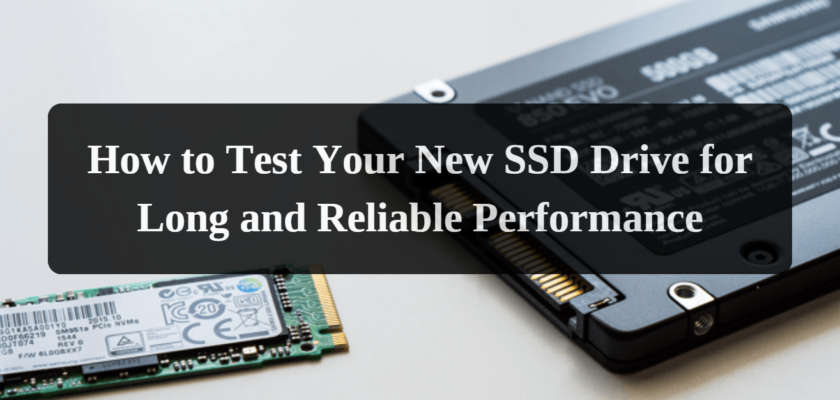When you’ve just purchased an SSD drive and plugged it into your computer, it’s important to perform a test to make sure it’s working properly and connected correctly. The actual performance of SSD drives may differ from the manufacturer’s stated specifications, so performing a few checks can ensure that the device is stable and productive. In some cases, additional cooling or tuning may also be required to ensure optimal performance.
Temperature Check:
One of the most critical aspects of SSD operation is its temperature. Maintaining an optimal temperature helps improve performance and the drive’s lifespan. Typically, an SSD’s normal operating temperature should be around 45°C, with temperatures during idle around 40°C. However, during prolonged and intensive operations like writing large files, temperatures can rise to 50°C or even higher.
You can check your SSD’s temperature using specialized software utilities such as AIDA64 or CrystalDiskInfo. These programs provide real-time information about your drive’s temperature. If the temperature significantly exceeds the recommended range, it may indicate cooling issues. In such cases, consider enhancing your computer’s cooling system or repositioning the SSD closer to fans for better ventilation.
It’s essential to note that temperature specifications may vary depending on your specific SSD model. Therefore, always refer to your device’s specifications for accurate temperature limits.
SSD Endurance Check:
SSD endurance refers to the amount of data that can be written to the drive before it begins to wear out. While branded SSDs undergo extensive quality checks during manufacturing, there’s always a slight risk of defects. Checking your SSD’s endurance can help prevent data loss down the road.
You can use software programs like CrystalDiskInfo, Samsung Magician, or Western Digital Dashboard to assess your SSD’s condition. For a new SSD, its health should be at 100%, and its wearout value should be at 0%. If you’re dealing with a used SSD, you can also access information about its operating time and the number of power cycles.
Error Check:
Checking for errors is a critical part of SSD assessment. This is where Self-Monitoring, Analysis, and Reporting Technology (SMART) comes into play. SMART is built into every SSD and provides information about its overall health and performance.
Utilize diagnostic tools like Hard Disk Sentinel or CrystalDiskInfo to inspect your SSD’s condition and identify potential errors. A new SSD should be error-free, with all sectors recognized as healthy. If errors or damaged sectors are detected during testing, it could indicate underlying problems with the device.
In case you encounter issues with a new SSD, you can contact the manufacturer or retailer for support or warranty replacement.
Speed Check:
SSD speed is one of its key advantages. Therefore, checking the read and write speeds is a crucial part of the evaluation process.
The speed of an SSD can depend on several factors, including file volume, the presence of parallel tasks being performed by the operating system, the type of interface used, and the slot’s construction on the motherboard.
To measure speeds, you can employ the manufacturer’s proprietary SSD tests or third-party programs like AS SSD Benchmark and HD Tune. These programs conduct read-and-write tests and provide information about the SSD’s performance.
If the test results show significantly lower speeds than those specified by the manufacturer, several factors could be at play:
- Outdated Interface: To achieve maximum performance, an SSD should be connected through the appropriate interface. For 2.5” SSDs, this typically means a SATA III interface. Older generations may restrict read and write speeds. For M.2 SSDs, pay attention to the number of available PCIe lanes on your motherboard, as some entry-level boards may provide only two lanes instead of the necessary four.
- BIOS Settings: To unlock the SSD’s full potential, it should operate in AHCI (Advanced Host Controller Interface) mode in the BIOS. Usually, the system automatically detects the new device and configures the appropriate mode. However, manual adjustments may be necessary if automatic detection fails.
- TRIM Function: When testing a used SSD, ensure that the TRIM function is enabled. TRIM helps clean the SSD of unnecessary data, freeing up cells and positively impacting performance. You can activate TRIM through the command line.
- Operating System: Using outdated operating systems like Windows XP or early versions of Windows 7 that are not optimized for modern high-speed SSDs can also restrict performance.
Additional Recommendations:
- Avoid installing server-grade SSDs in home PCs, as they are designed for more intensive and directed airflow.
- When installing M.2 SSDs, pay attention to their temperature, as they may heat up more than SSDs in other form factors. Consider adding heatsinks to M.2 slots or additional cooling.
- Remember that information about the SSD’s condition is available mainly for consumer-grade SSDs and a limited number of server models. Some diagnostic utilities may not recognize server-grade SSDs or provide limited information.
- After conducting all necessary checks and adjustments, don’t forget to regularly back up your important data to safeguard it from potential data loss.
In conclusion, by dedicating some time to perform these checks and adjustments after purchasing an SSD, you can ensure the reliable and long-lasting operation of your device. Follow the manufacturer’s recommendations and seek support if issues arise to quickly resolve them and continue enjoying the high performance of your SSD storage.

